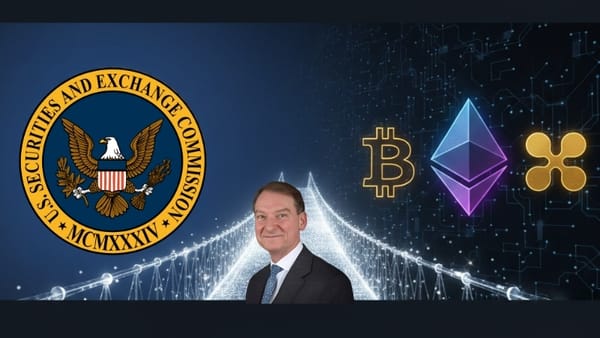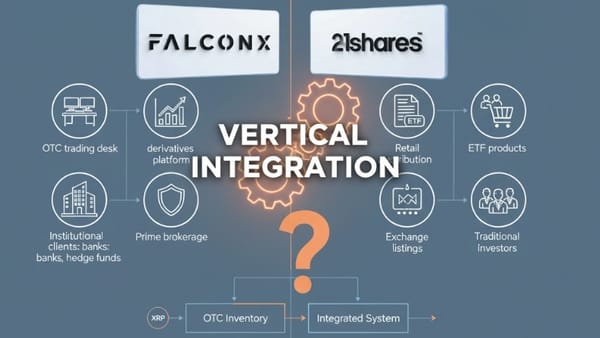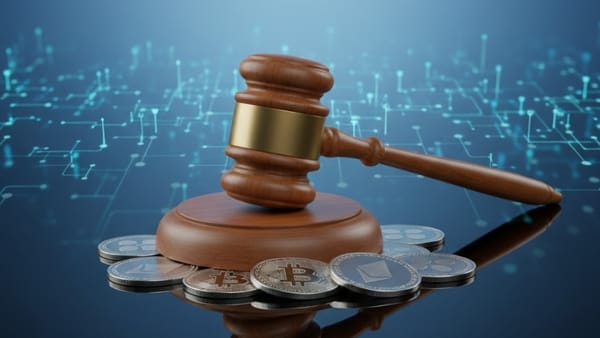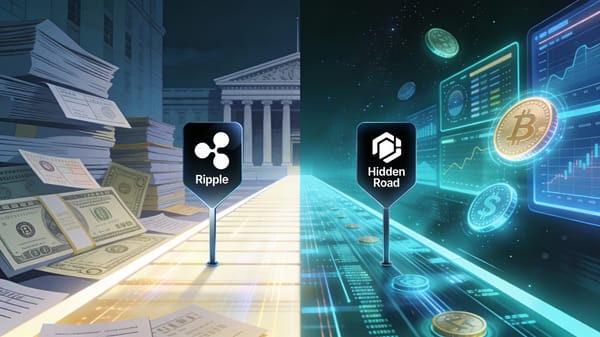The Federal Reserve Part 2: How DeFi Could Replace Federal Reserve Control
While government CBDCs threaten unprecedented financial surveillance, XRP and DeFi offer a path toward monetary freedom. Unlike centralized digital currencies that increase control, decentralized alternatives restore sovereignty while delivering superior efficiency and transparency
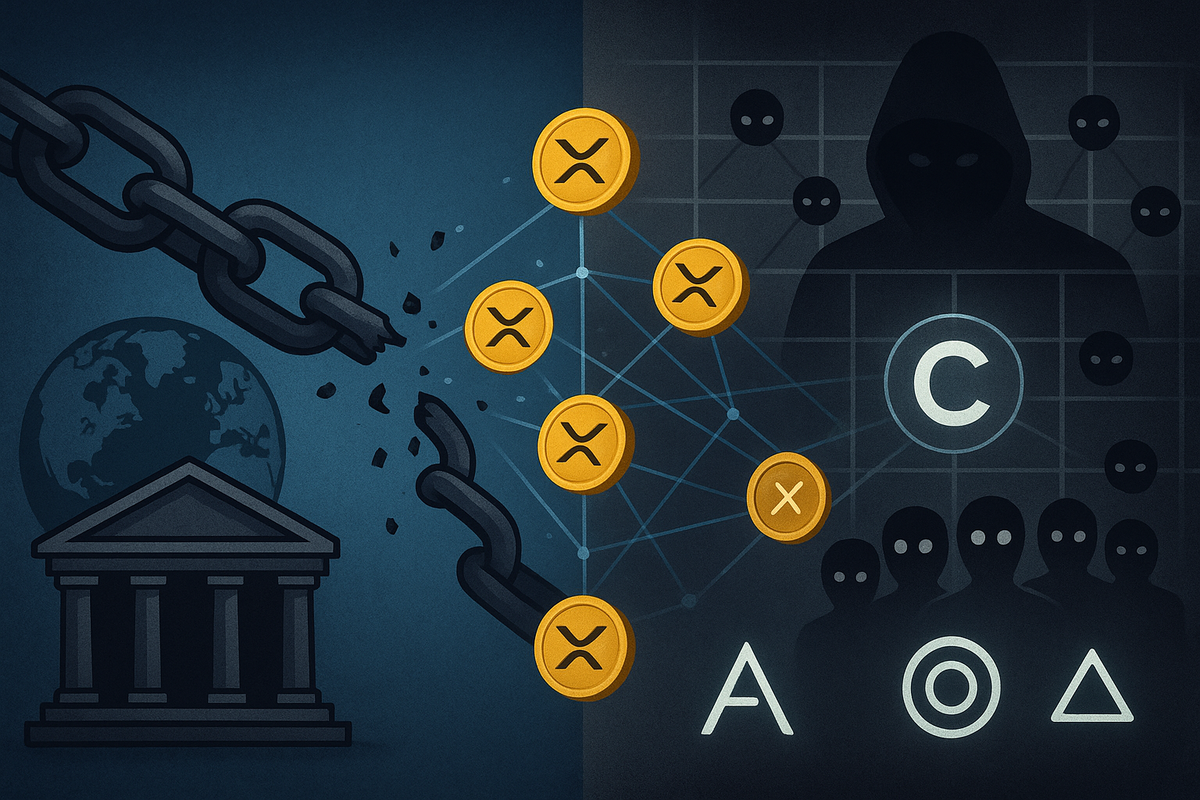
Exploring the potential for decentralized finance to restore monetary sovereignty while avoiding the trap of universal government digital currency
As the Federal Reserve's century-long experiment in centralized monetary control faces growing criticism, a new paradigm is emerging that could fundamentally transform how money works. Unlike proposals for government-controlled Central Bank Digital Currencies (CBDCs) that threaten to increase surveillance and control, decentralized finance (DeFi) technologies like XRP offer a path toward monetary freedom that preserves individual sovereignty while delivering superior efficiency.
The Digital Currency Revolution and XRP's Unique Position
The emergence of digital currencies presents revolutionary possibilities for the future of American monetary policy. Central Bank Digital Currencies (CBDCs) are being actively researched by the Federal Reserve, with the Fed Board tasked with reviewing the framework, identifying what has worked well and what hasn't, and updating it accordingly in 2025.
However, among digital assets, XRP has emerged as a fundamentally different solution—one that could serve as a bridge between the old centralized system and a new decentralized paradigm. XRP is designed primarily for fast, cost-efficient international payments. Speed: Transactions typically settle in seconds, rather than days like traditional banking methods. Scalability: The XRP ledger has proven to handle more than 1,500 transactions per second.
XRP's Technical Advantages Over Traditional Banking
These technical capabilities position XRP as a potential solution to many of the inefficiencies that the Federal Reserve was supposedly created to solve—but without the centralized control that enables systematic wealth transfer. XRP's capabilities in facilitating instant cross-border payments and settlements; its potential role in shaping CBDCs was highlighted in the Federal Reserve's public questionnaire, which sought insights into the risks, benefits, privacy concerns, and other aspects of CBDC adoption.
Unlike the Federal Reserve's opaque decision-making process, XRP operates on a transparent, decentralized ledger where all transactions are publicly verifiable. This represents a fundamental shift from the secretive Jekyll Island model that created the Fed to an open-source, auditable monetary infrastructure.
The DeFi Alternative: Decentralization vs. Central Control
Decentralized Finance (DeFi) represents a complete departure from the centralized banking model that has dominated since 1913. Instead of relying on a small group of financial elites to make monetary decisions in secret, DeFi protocols operate through transparent smart contracts that execute automatically based on predetermined rules.
Key Benefits of DeFi Over Central Banking:
Transparency: All transactions and protocol changes are visible on public blockchains, ending the secretive decision-making that has characterized Federal Reserve policy since Jekyll Island.
Programmable Sound Money: Smart contracts can enforce monetary rules automatically, preventing the arbitrary money printing that has destroyed 96% of the dollar's purchasing power.
Global Accessibility: DeFi protocols work 24/7 globally without requiring permission from centralized authorities, banks, or governments.
Competitive Innovation: Multiple protocols compete to provide the best services, driving continuous improvement rather than the stagnation of monopolistic central banking.
Elimination of Systemic Risk: Decentralized systems don't have single points of failure like centralized institutions that become "too big to fail."
XRP's Role in a Reformed Monetary System
If XRP were to play a significant role in a reformed monetary system, the market implications could be substantial. XRP may have the potential to reach three-digit prices if it becomes the go-to bridge currency for CBDCs globally, particularly given that more than 130 countries, representing 98% of global GDP, are actively researching or testing CBDCs.
However, XRP's true revolutionary potential lies not in serving government CBDCs, but in providing an alternative that operates independently of centralized control while offering superior functionality.
Institutional Integration Without Central Control
The potential for XRP integration into monetary operations represents a fundamental shift from traditional fiat currency systems. By acting as a bridge between different currencies and systems, XRP can reduce the costs and complexities of cross-border transactions, making international payments faster, cheaper, and more transparent.
Ripple's strategic positioning includes pursuing a charter as a national trust bank. If approved, we would have both state (via NYDFS) and federal oversight, a new (and unique!) benchmark for trust in the stablecoin market, demonstrating the company's commitment to regulatory compliance while maintaining technological independence.
The CBDC Threat: Universal Government Control vs. Decentralized Freedom
A critical distinction must be made between government-controlled CBDCs and truly decentralized digital currencies. Many central banks are developing CBDCs specifically to increase government surveillance and control over citizens' financial activities. These systems would give governments unprecedented power to:
- Monitor every transaction in real-time
- Freeze accounts instantly without due process
- Implement negative interest rates directly on citizens' holdings
- Control what citizens can purchase and when
- Create social credit systems tied to financial access
- Eliminate financial privacy entirely
Why DeFi Represents True Monetary Freedom
In contrast to government CBDCs, decentralized systems like XRP and other DeFi protocols offer:
Financial Sovereignty: Individuals maintain control over their own assets without requiring permission from centralized authorities.
Privacy Protection: While transactions are transparent for auditing purposes, personal identity can remain protected through cryptographic privacy features.
Censorship Resistance: No single entity can freeze accounts or prevent transactions, protecting against authoritarian overreach.
Global Accessibility: Anyone with internet access can participate, regardless of their government's monetary policies or restrictions.
Programmable Rules: Monetary policies are encoded in smart contracts rather than subject to the whims of central bankers or politicians.
Market Outlook and Adoption Scenarios
The convergence of Federal Reserve failure and digital currency development creates unique market dynamics. Analysts are forecasting that Ripple (XRP) could reach $26.97 by 2030, reflecting growing institutional confidence in its utility and adoption prospects.
Current market performance supports this optimistic outlook, with XRP showing strong momentum following regulatory clarity. The potential for spot ETF approval under the new administration further enhances institutional accessibility while maintaining the decentralized nature that distinguishes it from government-controlled alternatives.
Real-World Implementation Scenarios
Several scenarios could lead to widespread XRP adoption in a post-Fed monetary system:
Bridge Currency Role: XRP can act as a bridge currency between different digital currencies, allowing for frictionless conversion and transfer between various assets without requiring centralized intermediaries.
Institutional Settlement: Large financial institutions could use XRP for instant settlement of international transactions, eliminating the need for correspondent banking relationships and reducing counterparty risk.
DeFi Integration: XRP could serve as collateral in decentralized lending protocols, enabling individuals to access credit without traditional banking intermediaries.
Cross-Border Commerce: Businesses could use XRP for instant, low-cost international payments, eliminating the delays and fees associated with traditional correspondent banking.
The Philosophy of Monetary Decentralization
The choice between centralized CBDCs and decentralized alternatives like XRP represents a fundamental philosophical divide about the nature of money and freedom. The Federal Reserve model concentrates monetary power in the hands of a few unelected officials who make decisions affecting billions of people with little transparency or accountability.
DeFi represents the opposite approach: distributing monetary power through decentralized protocols that operate according to transparent, immutable rules. This aligns with the original American vision of limited government and individual sovereignty that the Federal Reserve system has systematically undermined.
Protecting Against the CBDC Surveillance State
As governments worldwide develop CBDCs with built-in surveillance and control mechanisms, alternatives like XRP become increasingly important for preserving financial freedom. The technology exists to create monetary systems that provide the efficiency benefits of digital currency while maintaining the privacy and sovereignty that cash once provided.
The key difference is that XRP and other decentralized systems give power to individuals and voluntary market participants, while CBDCs concentrate power in government hands. This distinction could determine whether the digital monetary future enhances human freedom or enables unprecedented authoritarian control.
Choosing Financial Freedom Over Digital Servitude
The failure of the Federal Reserve system opens the door for fundamentally different approaches to money. While government CBDCs threaten to create digital prisons that monitor and control every aspect of financial life, decentralized alternatives like XRP offer a path toward monetary systems that serve human flourishing rather than elite control.
The choice is clear: we can replace one centralized system (the Federal Reserve) with an even more controlling centralized system (government CBDCs), or we can embrace decentralized alternatives that restore monetary sovereignty to individuals while delivering superior efficiency and transparency.
XRP and the broader DeFi ecosystem represent more than just technological innovations—they embody a return to the principles of sound money, individual sovereignty, and limited government that once defined American monetary philosophy. As the Federal Reserve's century of failure becomes increasingly apparent, these alternatives offer hope for a monetary future based on freedom rather than control.
The revolution in money has already begun. The question is not whether change will come, but whether that change will lead toward greater freedom or deeper servitude. XRP and decentralized finance point the way toward a monetary system worthy of a free society.
MISSED PART 1? The Federal Reserve: From Secret Creation to Systematic Devaluation
Sources:
- The Crypto Basic (XRP and Federal Reserve CBDC discussions)
- Brookings Institution (Federal Reserve framework review)
- Bitget Exchange (XRP technical capabilities analysis)
- Ledger Insights (Ripple national trust bank application)
- Yahoo Finance (XRP price predictions and market analysis)
- Federal Reserve publications on CBDC research
- Technology Innovators (XRP CBDC integration analysis)
DISCLAIMER: This newsletter is for informational purposes only and does not constitute investment advice or a recommendation to buy, sell, or hold any securities. Investments in cryptocurrencies or other financial assets carry significant risks, including the potential for total loss, extreme volatility, and regulatory uncertainty. Past performance is not indicative of future results. Always consult a qualified financial professional and conduct thorough research before making any investment decisions.
